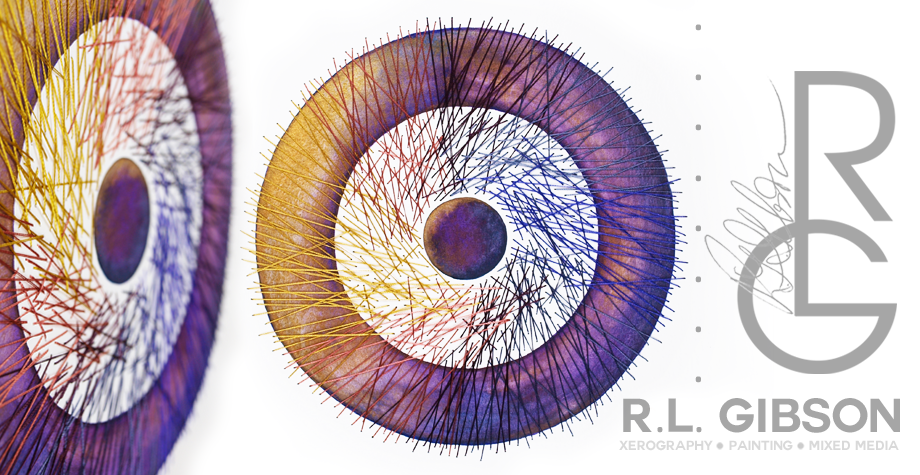Artist R.L. Gibson works, as both an illustrator and a xerographist. “Xerography” makes reference to the transfer of printed image to canvas or wood, but it is often used interchangeably with “xerox art” which refers to the physical print out itself of an image from a copier as the end form of the art.
 It all begins with the photograph. The message sometimes inspires the image I compose. Other times, a found photograph will inspire the message. Put together with both digital and hand-drawn imagery, the resulting image can contain hundreds of layers flattened to appear as a single space in time. That image is then printed with a carbon-based toner, often referred to as a Xerox copy. That print is floated, face down onto a substrate in one of a dozen or more available mediums that will pull the carbon from the print and suspend it throughout the transfer media. The image gains depth and texture that cannot be duplicated, a monotype offers the singularity of a hand-pulled print.” –R.L. Gibson
It all begins with the photograph. The message sometimes inspires the image I compose. Other times, a found photograph will inspire the message. Put together with both digital and hand-drawn imagery, the resulting image can contain hundreds of layers flattened to appear as a single space in time. That image is then printed with a carbon-based toner, often referred to as a Xerox copy. That print is floated, face down onto a substrate in one of a dozen or more available mediums that will pull the carbon from the print and suspend it throughout the transfer media. The image gains depth and texture that cannot be duplicated, a monotype offers the singularity of a hand-pulled print.” –R.L. Gibson
Xerography, as a medium, has neither a standard place in institutional art instruction nor a documented history. Gibson originally learned the technique from artist Kim Lemasters and has spent a decade refining her hand-paletted technique. The skips & bubbles found in the surface of the monotypes are not to be considered flaws but the result of the process that makes each image unique.
